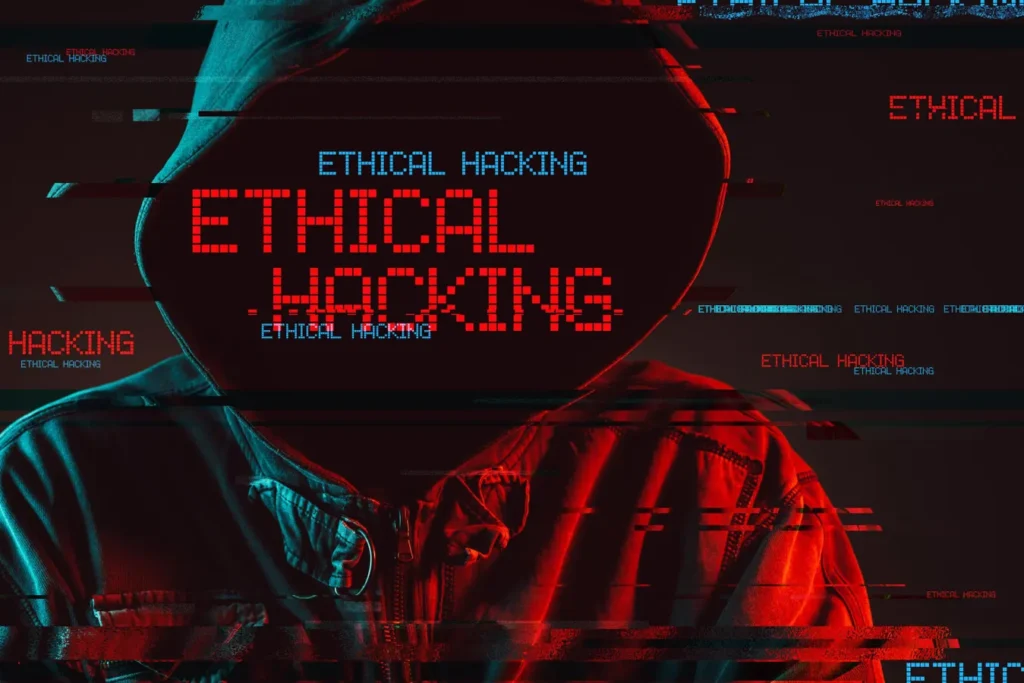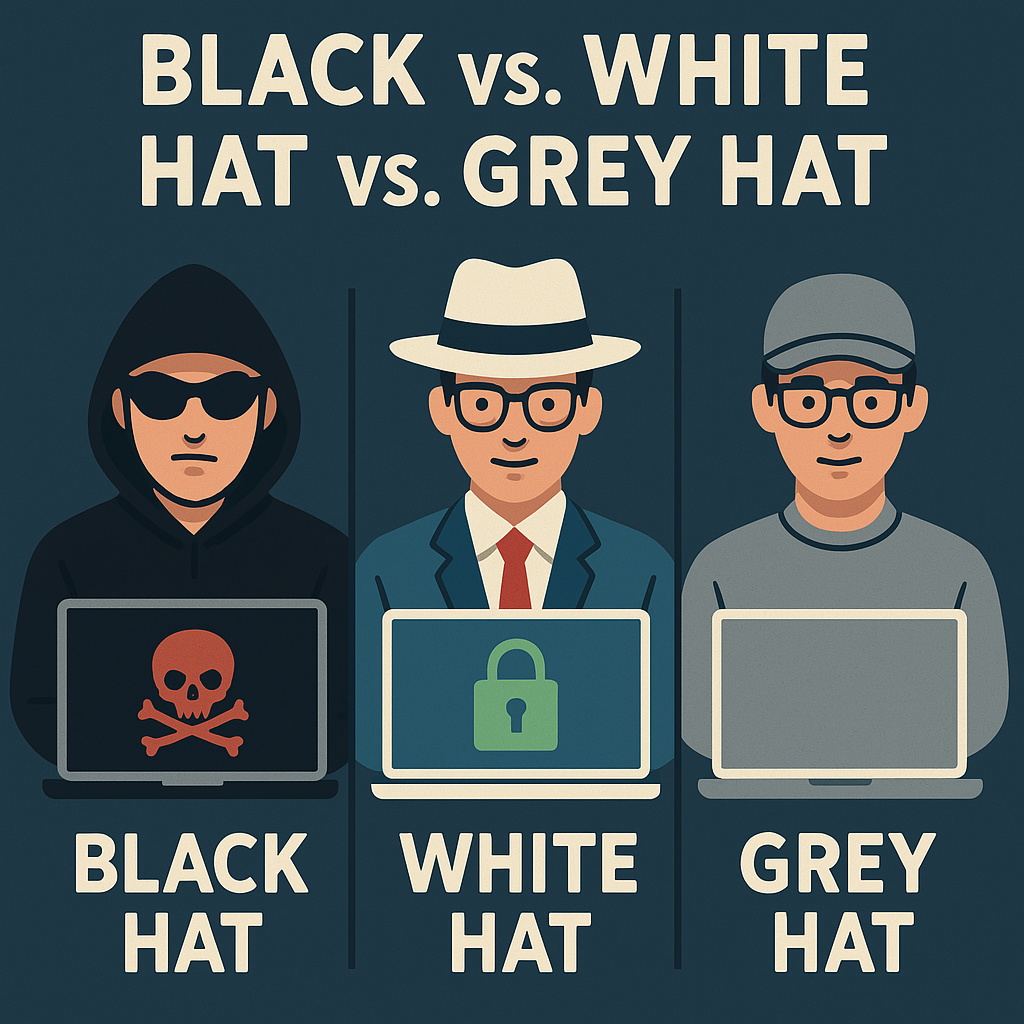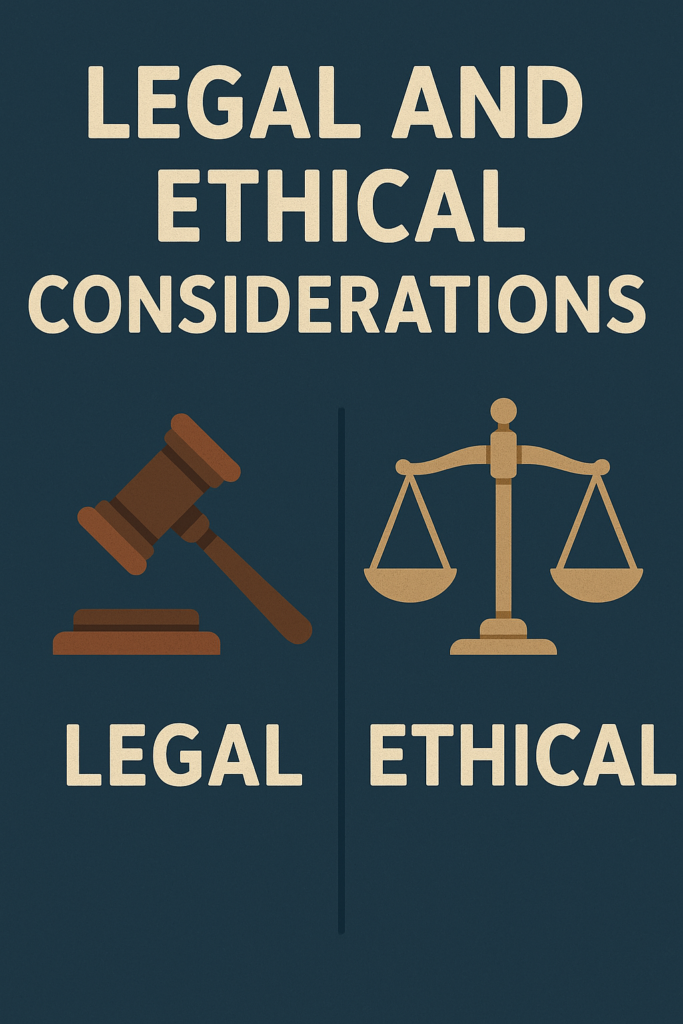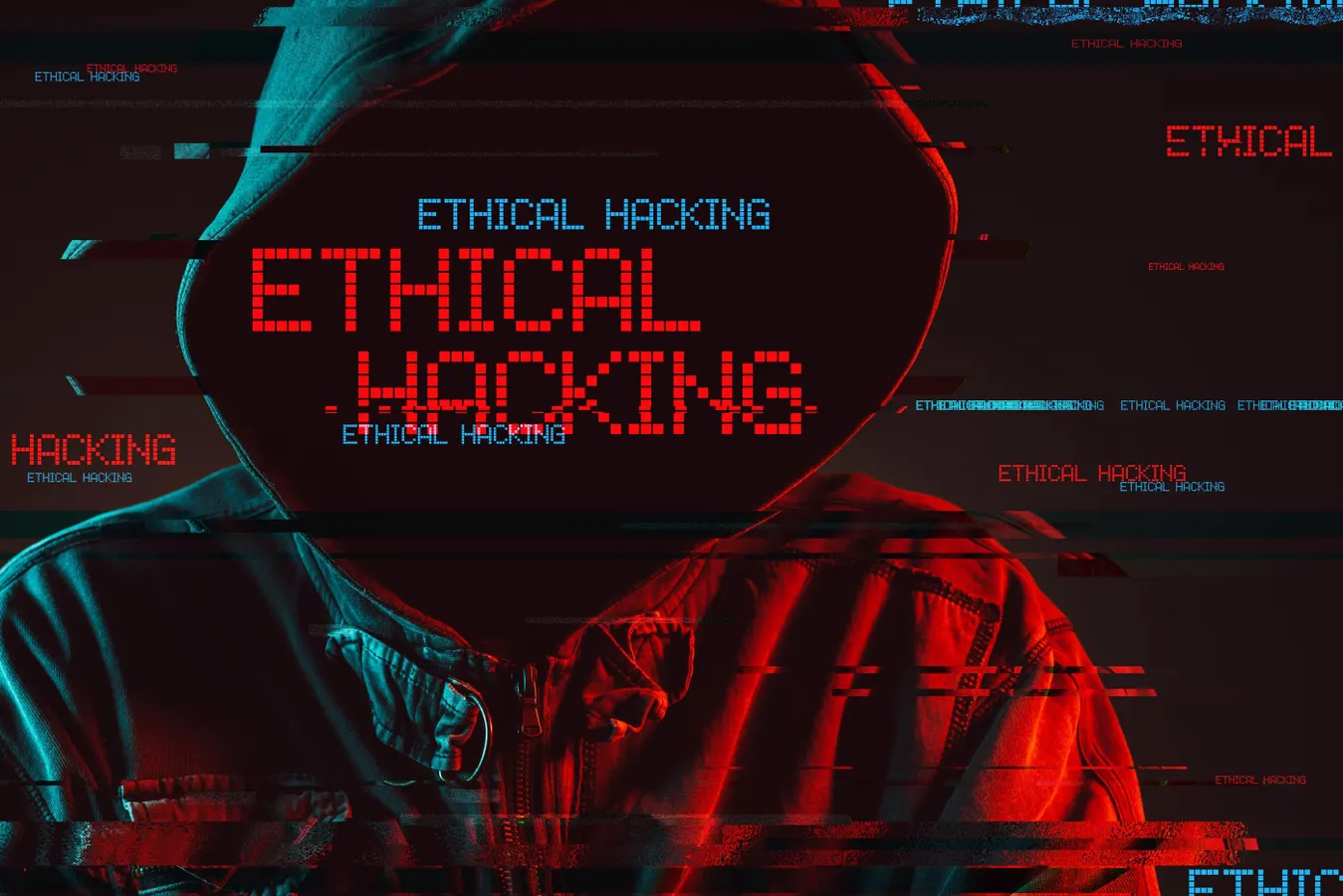1. Introduction to Ethical Hacking

In today’s digital era, where almost every aspect of our lives is connected to the internet, cybersecurity has become a major concern for individuals, businesses, and governments alike. From online banking and shopping to healthcare systems and national defense infrastructures, our dependence on digital platforms continues to grow. However, this increased reliance also opens up new avenues for cybercriminals to exploit vulnerabilities for malicious purposes.
This is where ethical hacking steps in as a powerful line of defense. Ethical hacking—also known as white-hat hacking, penetration testing, or security testing—is the process of deliberately probing a computer system, network, or application to find and fix security weaknesses. Unlike malicious hackers, ethical hackers work with the full permission of the system owner and follow strict legal and ethical guidelines.
The goal of ethical hacking is not to cause harm but to protect. These professionals use the same techniques as malicious hackers but do so in a controlled and responsible manner. They simulate cyberattacks to uncover loopholes and vulnerabilities before malicious hackers can exploit them. Ethical hackers are, in essence, the guardians of the digital realm—working to secure systems, safeguard data, and maintain trust in digital infrastructure.
Whether you’re a tech enthusiast, a budding cybersecurity professional, or a business owner curious about securing your digital assets, understanding ethical hacking is crucial. This comprehensive guide will walk you through the key principles, practices, and tools that define ethical hacking today.
2. The Importance of Ethical Hacking in Cybersecurity
The digital landscape is constantly evolving—and so are the threats. According to recent cybersecurity reports, the number of data breaches, ransomware attacks, and phishing scams has skyrocketed in recent years. Companies are not just losing money; they’re also losing the trust of their customers and the integrity of their operations.
A single successful attack can compromise millions of user records, disrupt critical services, or even bring down entire networks. High-profile breaches like those at Equifax, Yahoo, and Facebook have shown us how damaging poor security can be. For governments, a cybersecurity breach can threaten national security. For businesses, it can result in significant financial loss, legal consequences, and reputational damage.
Ethical hackers play a crucial role in preventing such incidents. They serve as proactive defenders, constantly testing systems for weak points and working to strengthen them. Their work enables organizations to:
- Identify and fix security flaws before they are exploited.
- Ensure regulatory compliance (such as GDPR, HIPAA, or PCI-DSS).
- Minimize the risk of cyberattacks and data breaches.
- Increase customer and stakeholder trust.
- Reduce long-term cybersecurity costs.
In many cases, companies now employ full-time ethical hackers or hire third-party security firms to conduct regular penetration tests and vulnerability assessments. Ethical hacking is no longer a niche field—it is a strategic necessity.
3. Black Hat vs. White Hat vs. Grey Hat

To fully grasp the ethical responsibilities of a hacker, it’s important to distinguish between the three primary categories of hackers:
- Black Hat Hackers: These are the individuals who use their technical skills for illegal or unethical purposes. Their motives often include financial gain, political agendas, sabotage, or simply the thrill of disruption. Black hat hackers operate without consent, and their activities are considered criminal.
- White Hat Hackers: These are the good guys—also known as ethical hackers. They have explicit permission to test systems and find vulnerabilities. Their aim is to help organizations improve their security posture. White hats abide by the law, follow industry standards, and typically work in partnership with the IT departments of organizations.
- Grey Hat Hackers: As the name suggests, grey hats operate in the grey zone. They may identify vulnerabilities in a system without authorization but do not have malicious intent. Instead of exploiting the flaw, they might report it to the organization—or, controversially, disclose it publicly. While their intentions might be good, grey hat activities are still illegal in many jurisdictions since they are performed without permission.
Understanding these categories is crucial because it highlights the importance of consent, legality, and accountability in ethical hacking. Ethical hackers must be extremely careful to stay within the boundaries of their authorized engagement. Straying outside these boundaries—even with good intentions—can result in legal consequences and damage to professional reputation.
4. Key Skills Every Ethical Hacker Should Have
Ethical hacking is a highly technical and specialized discipline. It requires a combination of theoretical knowledge, practical experience, and continuous learning. Here are the core skills and knowledge areas that every aspiring ethical hacker should focus on:
- Computer Networking: A deep understanding of how networks operate is essential. Ethical hackers should be familiar with network topologies, TCP/IP protocols, DNS, routers, switches, firewalls, proxies, and network segmentation.
- Operating Systems Proficiency: Ethical hackers often work across different operating systems. Proficiency in Linux (especially Kali Linux), Windows, and macOS is important. Kali Linux, in particular, comes pre-loaded with a wide array of penetration testing tools.
- Programming and Scripting Languages: Understanding programming helps hackers write their own scripts, analyze malware, and automate tasks. Common languages include:
- Python: Great for scripting and automation.
- JavaScript: Useful for web-based vulnerabilities.
- C/C++: Helps understand buffer overflows and low-level exploits.
- Java, PHP, Ruby: Helpful in application-level testing.
- Cybersecurity Fundamentals: Knowledge of how firewalls, antivirus software, intrusion detection systems (IDS), and VPNs work is critical. Ethical hackers must understand the methods used by cybercriminals, including malware, ransomware, phishing, and social engineering.
- Penetration Testing Methodologies: Familiarity with frameworks like OWASP, PTES (Penetration Testing Execution Standard), and NIST guidelines is essential.
- Analytical Thinking: Critical thinking and problem-solving skills are vital. Ethical hackers often need to think creatively to find non-obvious vulnerabilities.
- Report Writing and Communication: The ability to clearly document findings and explain technical issues to non-technical stakeholders is crucial.
Certification paths such as the CEH (Certified Ethical Hacker), OSCP (Offensive Security Certified Professional), and CompTIA PenTest+ can help formalize and validate these skills.
5. Legal and Ethical Considerations

Unlike black hat hacking, ethical hacking is done within the confines of the law. But legal compliance alone is not enough—ethical hackers are also expected to uphold high moral and professional standards. Before performing any test, ethical hackers must ensure they have:
- Explicit Written Permission: No testing should ever be conducted without the documented approval of the system owner. Verbal agreements are not sufficient in the eyes of the law.
- Clearly Defined Scope of Work: The engagement should outline what systems can be tested, which techniques are allowed, the testing window, and the desired outcomes. Any action outside this scope is considered unauthorized.
- Non-Disclosure Agreements (NDAs): Since ethical hackers may gain access to sensitive data, NDAs are essential to protect both parties.
- Data Handling Policies: Ethical hackers must know how to responsibly manage, store, and dispose of any sensitive information discovered during testing.
- Responsible Disclosure: When vulnerabilities are found, they must be reported through proper channels. Ethical hackers must not exploit, sell, or disclose vulnerabilities publicly before the organization has had a chance to fix them.
Violating these principles not only exposes ethical hackers to legal risks but also damages the reputation of the entire cybersecurity community. Ethical hacking must always be conducted with transparency, accountability, and professionalism.
6. Common Tools Used in Ethical Hacking
Ethical hackers rely on an extensive toolkit to carry out their tasks. These tools help simulate attacks, analyze vulnerabilities, and assess the overall security posture of systems. Below are some of the most commonly used tools, categorized by function:
- Reconnaissance Tools:
- Nmap: A powerful network discovery tool that helps map network structures and identify live hosts, services, and open ports.
- Maltego: Used for open-source intelligence (OSINT) and information gathering.
- Scanning and Enumeration Tools:
- Nessus: A comprehensive vulnerability scanner that helps identify weaknesses in configurations and software.
- OpenVAS: Another popular open-source vulnerability scanner.
- Exploitation Frameworks:
- Metasploit Framework: Allows users to write, test, and execute exploit code against remote targets.
- SQLMap: Used for detecting and exploiting SQL injection vulnerabilities.
- Sniffing and Packet Analysis:
- Wireshark: Captures and analyzes network traffic in real-time, useful for diagnosing issues or uncovering potential attacks.
- Web Application Testing:
- Burp Suite: A leading tool for identifying vulnerabilities in web applications.
- OWASP ZAP: Another tool for automated and manual web application security testing.
- Password Cracking Tools:
- John the Ripper: A fast password cracker that supports many encryption algorithms.
- Hashcat: Known for GPU-based password recovery.
Each of these tools has its own learning curve, but mastering them is essential for anyone serious about ethical hacking. It’s important to use these tools responsibly and only in authorized environments.
7. Basic Terminology in Ethical Hacking
As with any specialized field, ethical hacking has its own set of jargon. Understanding these terms will help you better grasp how ethical hackers think and work:
- Vulnerability: A flaw or weakness in a system that can be exploited by an attacker.
- Exploit: A piece of code or technique that takes advantage of a vulnerability to perform unauthorized actions.
- Payload: The part of an exploit that performs the intended action, such as opening a backdoor or stealing data.
- Zero-Day: A vulnerability that is unknown to the software vendor and for which no patch exists.
- Penetration Testing (Pentesting): Simulating an attack on a system to evaluate its security.
- Firewall: A security system that monitors and controls incoming and outgoing network traffic.
- IDS/IPS: Intrusion Detection Systems and Intrusion Prevention Systems help identify and block malicious activities.
- Phishing: A social engineering attack where attackers deceive users into revealing sensitive information.
- Brute Force Attack: A trial-and-error method used to crack passwords or encryption keys.
Familiarity with these terms will make it easier to understand ethical hacking tools, read security reports, and communicate effectively with other professionals in the field.


